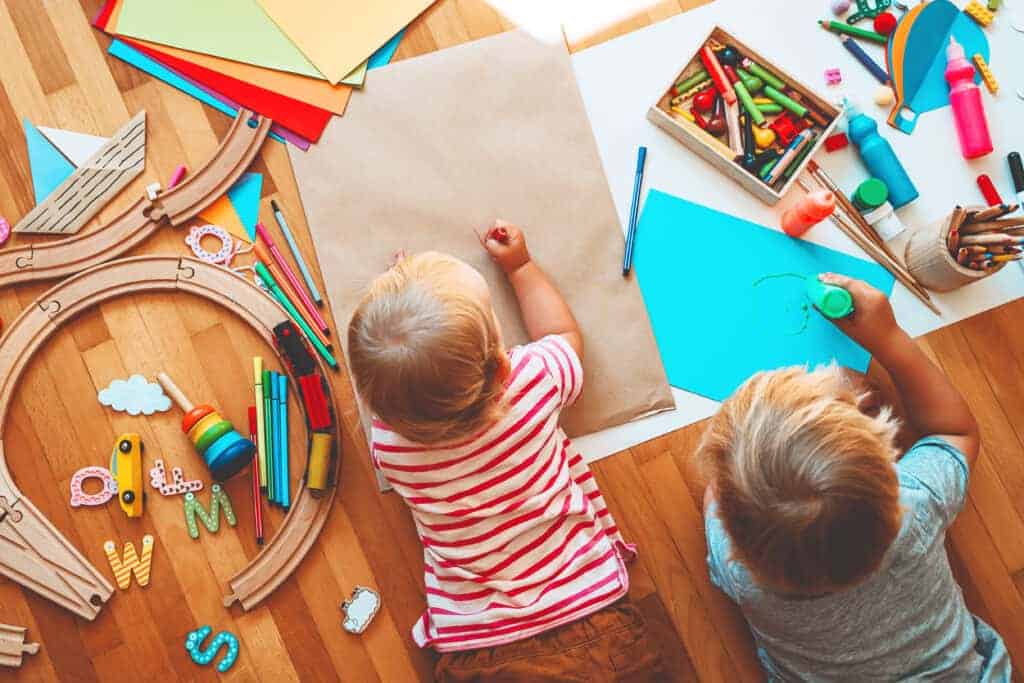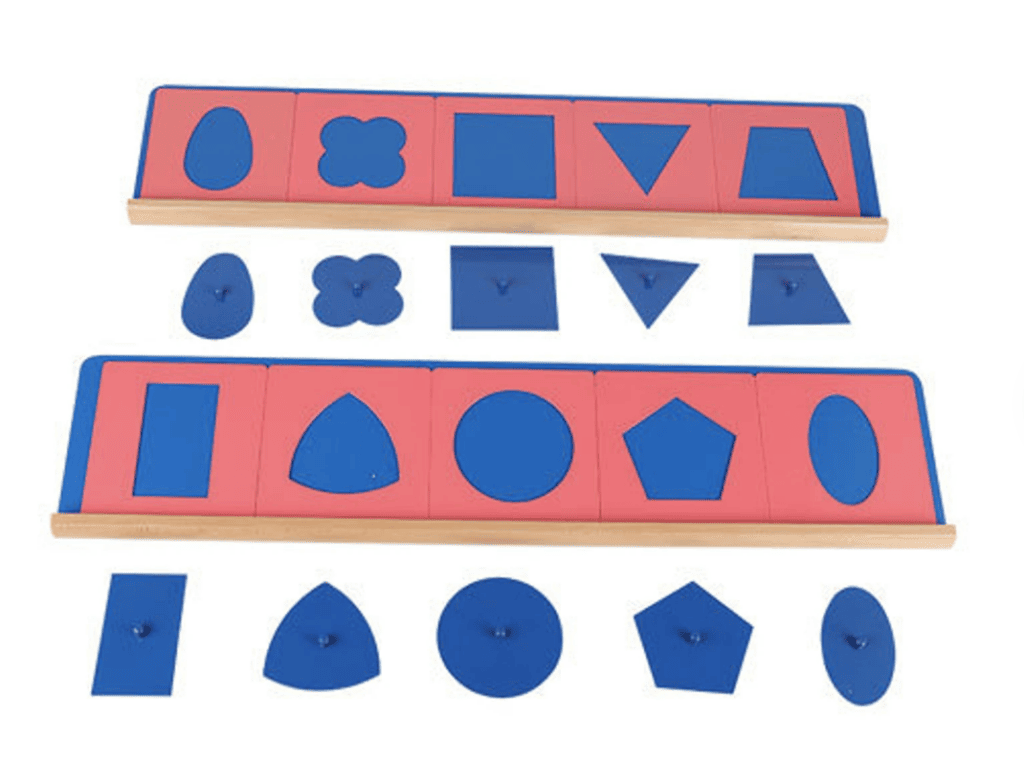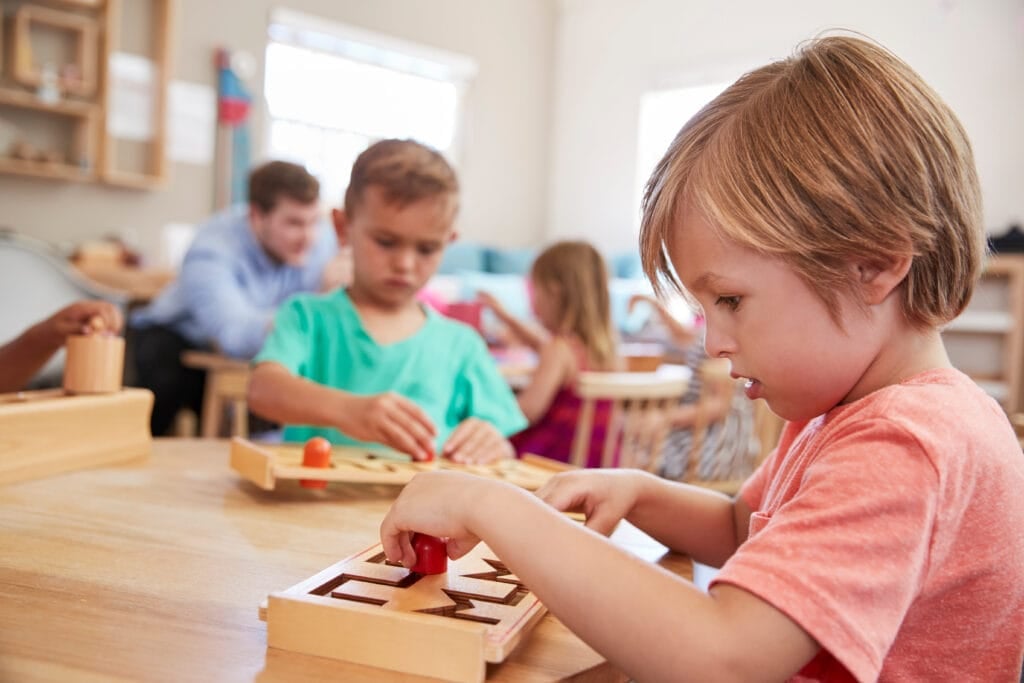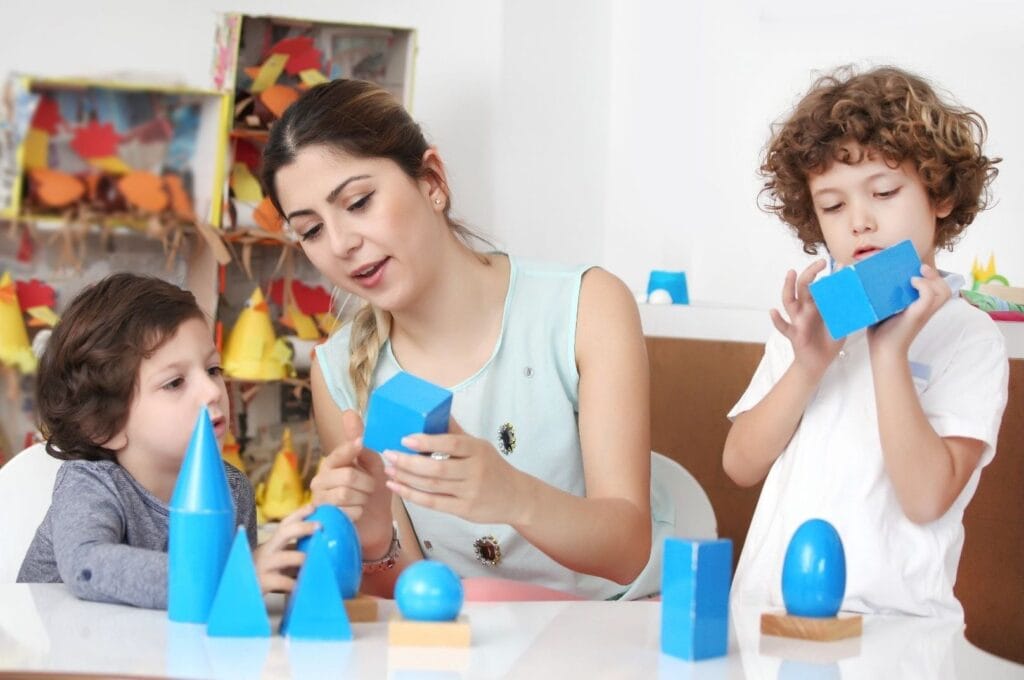Between its dreamy child-led style and fun, educational activities, it’s hard not to fall in love with the
Montessori teaches math by using hands-on methods to help children advance at their own pace. These methods include manipulating bead and stamp material, utilizing strip boards, using physical shapes to learn fractions, and memorizing essential math facts.
While

How Does Montessori Teach Math?
“In the
Source: Montessori Print Shop
The methods involved in teaching Montessori math center around the belief in a child’s innate ability and natural inclination towards problem-solving.
Like other
Source: Hollis Montessori School
Though this is a pretty comprehensive list, these materials may differ depending on the school your child is attending, and you can alter them to fit your own needs if you are homeschooling your child.
How Will My Child Learn Montessori Math?
Most of
Each material has a specific function or purpose, but many can be used for several different math techniques.
- Sandpaper Numbers –
Montessori prides itself on being a multi-sensory learning style, and sandpaper numbers are just that. The cards have the numbers 0-9 printed on fine-grit sandpaper, allowing children to both feel and see the numbers as they learn them. These are presented to children during the preschool years as they learn how to identify and begin tracing the numbers.
- Number Rods – Alternating blue and red, these rods are usually used to introduce number values to small children. Each rod has a certain amount (1-10) and can be lined up to compare the values. After the child is comfortable with the values and quantity associated with the rods, you can introduce the associated number symbols.

- Montessori Activities – This is a broad name for the various activities children experience in a
Montessori program. InMontessori preschools, children are given open-ended options for play and sensory stimulation. Many of these activities naturally lead to learning about math. For example, the Spindle Box activity has children place appropriate quantities of wooden sticks in containers labeled with numbers.

- Memorization – While this may seem out of place in such an open-ended education style, math facts can go a long way in helping children succeed as they advance to higher levels.
Montessori advocates for helping children memorize basic math facts (like 6+5, or 10 x 3) so that they will need to think less about basics when the math gets more complicated.
- Golden Bead Material – Golden Beads, together on a string in varying quantities, are used before a child advances to the bead frame beads. These beads are all one color (gold) and teach the child about quantity and value. They help the child learn about place value and complex numbers using just one color.

- Bead Frame – Bead Frames contain many beads strung together at different lengths and colors. Each length and color represent specific values and allow the children to begin learning more complex addition and multiplication.
- Addition/Subtraction Strip Boards – Boards contain a table of at least 18 across and 11 down. The child uses blue and red strips to add or subtract given numbers by placing them on the board. Each strip has a specific value, and when placed together, the strips line up to the equivalent number on the board.

- Stamp Game – This comes with four columns of different colors. Each column represents either 1s, 10s, 100s, or 1000s and can be used with the corresponding tiles or “stamps” to do simple or complex addition, subtraction, multiplication, or division. More on how to use the stamp game here.

- Checkerboard – Children advance to the checkerboard after they are confident in addition and subtraction. The checkerboard uses the same beads as the bead frame, but each bead now represents the square’s value in which it is placed. The checkerboard can help children multiply or divide large sums up to 1,000,000.

- Racks and Tubes – This is used for children who are ready for long division. Each board contains nine lines across and down and can be used in many different ways to help children become more comfortable with the decimal system and division exercises.
- Shape Manipulatives – These are used from the very beginning in the
Montessori classroom. Preschoolers play with many shapes as their teachers help them identify which shape it is and point out their characteristics. This natural exposure helps children become familiar with both 2d and 3d shapes.

- Fraction Insets – These hold pieces of shapes to help teach children fraction values. Children can move the pieces around to identify similar values in other shapes, so ½ + ¼ will look like ¾.
How Does Montessori Teach Addition and Subtraction?
Addition and subtraction are taught early through natural play and purposeful
- Number Rods
- Golden Bead Material
- Addition/ Subtraction Strip Boards
- Stamp Games
The child also learns to memorize basic addition/subtraction facts and often plays with fractions and shapes. By the time they enter the mid-elementary level, they will likely be familiar with place value (1s, 10s, and 100s) and adding and subtracting into the thousands.
Once they have learned the basic facts, they will move onto more complex addition/subtraction techniques such as the Checkerboard method.
How Does Montessori Teach Multiplication and Division?
Multiplication and division are taught once the child has a firm grasp of basic value and quantity. While children are encouraged to discover multiplication/ division concepts through natural play, they are more formally taught through:
- Bead Frame
- Racks and Tubes
- The Checkerboard Method
- Stamp Games
After the children become familiar enough with the concepts, they can begin moving away from physical materials and easily do the same equations using just pen and paper. While they are focused on multiplication and division of whole numbers, they simultaneously learn multiplication and division with fractions using fraction insets and 3D







